Food Safety Tips During an Emergency
Emergency situations can happen at any time. Think about what has happened in the last few years with various sicknesses, particularly with the variants of the flu going around. Think about what has happened in Texas with the power grids.
Can you survive for a week under dire circumstances if your power was out or the food supply is drastically reduced? I felt prompted to update this critical post after hearing about all the new hospital cases being reported on the news.
It’s not only important to have food and water stored in order to get through the emergency but to also know food safety tips, especially if you don’t have the power to keep your food at the necessary hot or cold temperatures needed to keep it safe to eat. Harmful bacteria like salmonella lurks in all kinds of foods if not prepared properly or stored as needed after the food has been cooked.
Foodborne Illness
Please be careful about foodborne illness, and wash your hands with soap as often as you can. Our immune systems can fight off all kinds of things so we don’t experience vomiting, diarrhea, and worse, but still we need to take all the necessary precautions we can to prevent contamination.
These are my new favorite, Silicone Cutting Board Please don’t cross-contaminate your raw meat, like chicken, turkey, steaks, roasts, ground beef, or pork with salads you are making. Please use separate cutting boards.
If you have leftovers, please refrigerate them as soon as possible. Leaving food out at regular room temperature can be risky. Unless kept at a high enough temperature, even leaving food in food-warming trays for an extended period could be a problem. Use soapy water to wipe down all countertops. How To Stop Influenza In Your Home
Emergency Food Supply
Before we delve into how to keep your food safe during an emergency, it’s important to discuss your food supply and what you should have in case of an emergency.
Here’s the deal, it took 4 days before executive orders were signed and put into place to send relief to Texas during their terrible cold spell and the related power outages. With that being said, some people didn’t have access to food or water, or even heat for those 4 days and much longer in some locations!
Opinions vary greatly when it comes to the amount of food and water you should have on hand. At the very minimum, you should have at least a week’s worth of extra food and water, however, I would recommend having at least a month and trying to ultimately have up to six months available. In case you missed this post, Canned Foods I Highly Recommend You Store
Having sufficient water to properly hydrate, cook, do minimal laundry, and maintain limited personal hygiene levels is a must. I suggest 4 gallons per person per day, so plan ahead and start your water storage preparations now, not later. You may not have cold water to drink when you want it, but having some water will literally keep you alive.
A Clean Kitchen Is Awesome
Do you love a clean kitchen as much as I do? We never know when we’ll lose water or power during and after a disaster. It’s critical we stay on top of keeping our kitchens clean and sanitary.
I’m sure most of you do, but there may be a few who need to be more aware of disasters and how they may affect their ability to properly clean countertops, faucets, stovetops, microwave ovens, refrigerators, freezers, and more.
We need to be one step ahead of the storm, so to speak. If I see dark clouds heading my way, I start doing ANY laundry I might have sitting in the hamper. I’m lucky I have several ways to do laundry after a disaster, but I like staying ahead of the game.
Please stock cleaning supplies, those will be the first to disappear in the grocery stores after an unforeseen emergency. Don’t forget some bleach, we will need it if the sewers back up and “stuff” ends up on your floors.
Your bathroom is another location to take care of and properly sanitize. Young children don’t understand all the issues when it comes to cleaning up after themselves, particularly in the bathroom area. Taking some time to train and work with them is important.
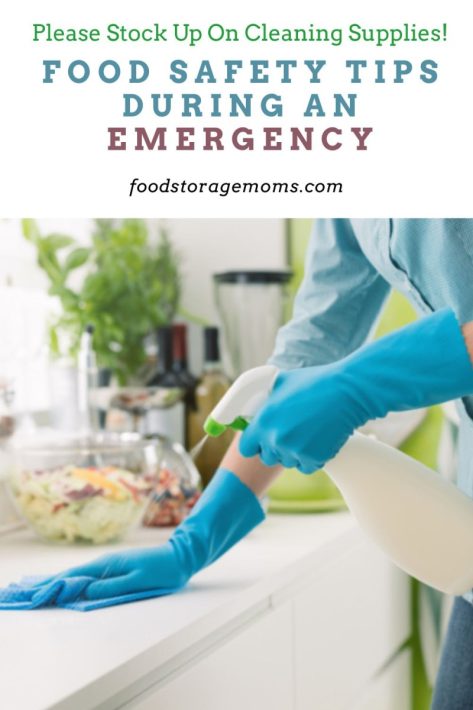
What Food To Store for Emergencies
For the most part, I would say to store what you eat so your family can stay on as normal a regimen as possible. However, what you eat may not be able to withstand not having electricity for that fridge to run to maintain cold food, or the ability to cook your food.
For that reason, I also recommend storing emergency foods that might not be on your typical food inventory. They may not be the most appetizing choices, but they will get you through the tough patches. The Federal Emergency Management Agency recommends having the following foods on hand for emergencies:
- Powdered milk in a box
- Powdered milk in cans (lasts longer)
- Dried fruit
- Crackers
- Potatoes
- Condensed canned soups
- Peanut butter and jelly
- Canned fruit, juice, and vegetables
- Hard candy
- Canned nuts
- Wheat and flour
- Vegetable oil
- Salt
- Soybeans
- Instant coffee, tea, and cocoa
- Bouillon
- Pasta and rice
- Ready-to-eat meals and instant cereals
You should also have the following:
- Canned and dried meats
- Beans
- Whole grains, which store better than flour
- Spaghetti sauce (for all the dry pasta you have)
- Spices will bring flavor to meals that are otherwise bland
In addition to these foods, don’t forget about food for babies, any elderly house members, and your pets because they are a big part of your family.
Food Safety Tips
When it comes to emergency situations, it is important to have non-perishable items you can rely on if there’s no electrical power or gas for cooking. However, that doesn’t mean you won’t have perishable food in an emergency. If your power goes out, and you have food in your fridge and freezer, here are some safety tips to keep in mind:
- Refrigerator time: If the power goes out and you don’t open the doors to the fridge, you can safely eat food stored there for about 4-hours.
- Freezer time: If the power goes out and you don’t open the doors, you can safely eat food from the freezer for up to 48 hours.
- Keep the freezer packed: To get the most storage time possible out of your freezer, keep it as full as possible. The more tightly food is packed, the better it will stay cold for longer periods of time.
- Food temperatures: Meat, poultry, fish, and eggs need to be kept at 40 degrees Fahrenheit or less. So, if the power goes out for longer than the time above and it’s less than 40 degrees outside, you can place your food outside to help save it longer.
- Dry Ice: 50 pounds of dry ice can keep your fridge cold enough for two days.
Refrigerator Food Safety Tips
My motto is, “When in Doubt, Throw It Out!”
Once you’re no longer able to keep your food cold, here are some steps to take to help determine if you can eat it or not:
- Meat, Seafood, and Poultry: Anything with meat in it that has been at 40 degrees or hotter for more than two hours needs to be thrown out!
- Cheeses: If it’s a soft cheese, it should be treated exactly the same as the meat above. However, if it is a hard cheese, it is safe until it becomes moldy.
- Dairy: Once dairy has been at 40 degrees or higher for two hours, it should be thrown out. Butter and margarine are exceptions to this rule.
- Eggs: You should do the same with eggs. They should be thrown out after two hours of being in temperatures at or above 40 degrees.
- Casseroles, stews, and soups: If they were refrigerated and they contained meat or meat broths, they should be discarded after two hours at or above 40 degrees.
- Fruit: Fruit and fruit juices, even if in the refrigerator, are safe until they start to rot. But, if it has been cut or sliced, it needs to be thrown out after two hours at or above 40 degrees.
- Vegetables: Typically, raw vegetables are totally safe to leave out. However, cooked vegetables can become dangerous. Keep raw veggies until they rot and throw out cooked veggies if exposed to warmer temps for two hours or more.
- Sauces and condiments: Throw out Mayonnaise, tartar sauce, and horseradish after 8 hours if stored above 50 degrees Fahrenheit. Fish and oyster sauces, hoisin sauce, cream-based dressings, open spaghetti sauce, and Worcestershire sauce should be thrown out after 2 hours at or above 40 degrees.
- Pies and pastries: If they are filled with cheese, custard, or chiffon pies, throw them out if not kept at 40 degrees or less.
- Miscellaneous: Treat all other miscellaneous items as you would meat that was in the refrigerator.
Freezer Food Safety Tips
If food is in your freezer, it has a whole different set of guidelines for deciding when to throw it out. In fact, certain foods can even be refrozen after it reaches a certain temperature. Here are your food safety tips for your freezer food:
- Meat, Poultry, and Seafood: Again, once this food is at 40 degrees for more than 2 hours, throw it out! However, if it still has ice crystals and feels cold to the touch when your power comes back on, it can be refrozen.
- Dairy: As long as it remains cold to the touch, it is safe to consume. If they are only partially thawed, they can be refrozen when the power comes back on.
- Fruit and Vegetables: As long as it doesn’t smell, they may be safe to eat. However, once totally thawed for 6 hours, you will want to throw your vegetables out.
- Bread: We all throw bread in the freezer. Bread is fine for a while after thawing and can just be thrown back in the freezer after the power comes back on.
- Miscellaneous: Things like flour, cornmeal, and nuts can be refrozen when the power turns back on and are good for weeks outside of the freezer. Waffles, pancakes, and bagels can be refrozen when the power comes back on. Discard the following after 2 hours at 40 degrees or above: casseroles, pasta and rice dishes, frozen meals, entrees, pizza, sausage, biscuits, meat pies, and convenience foods.
Food Safety Rules and Advice
If an emergency happens, there are some rules to keep in mind to ensure you eat food that is safe:
- NEVER taste food to determine if it is safe!
- If food begins to thaw examine it to see if it is too far along in the thawing process to refreeze.
- You can’t put food in the snow to keep it cold during the day. The sun will warm the food above 40 degrees.
- If there is a fire in your home, throw all the food away that was affected by the fire.
- In the event of a flood, you should throw out all food that came in contact with the water, including canned goods. Trying to salvage them by using water that came to a boil to treat them really isn’t sufficient protection.
Get a Thermometer
When it comes to having enough to eat in an emergency, it’s not just about having the food, but also keeping it at the right temperatures. If you don’t already have one, I would recommend getting a food thermometer refrigerator/freezer thermometer to check your food in the event of a power outage.
When cooking foods, particularly meat products, I suggest you use the food thermometer to check the internal temperature. As a general rule, if you are eating hot food where the temps were properly maintained, you should be ok. Having clean utensils like the knife, fork, and spoon we use every day is also critical. Here is where having a gallon of water that has been boiled when cleaning your utensils provides that extra layer of protection.
Carving Trays
If you serve your food or do any carving on a tray that may have been exposed to questionable food or bacteria, be sure to clean it again, just in case. I like to keep my food in air-tight containers, but at least try to cover food that has been exposed to any airborne materials that may be an issue during a disaster or emergency experienced at your home. If you have fruits where peeling can help, do so as long as the internal flesh has stayed as fresh as possible.
Have some food menu plans available that include recipes for those tough times so you’re not rushing around trying to figure out how to safely and efficiently feed your household members.
Also, have some backup cooking plans, like a Sun Oven, propane stove, or butane cooking device, since that slow cooker we all love to use may not work in an emergency, particularly when the power is out.
Other Posts To Check Out
In case you missed some of my other food preparedness posts, here are some others you may want to check out:
- Superfoods You Should Stock
- Emergency Food Kits: Which Ones Do You Need
- Top 50 Survival Food Items You Need to Stock
- Water and Food Storage
- 5 Freeze Dried Food Items I Recommend You Store
Final Word
Remember, plan for the worst, and hope for the best! Finally, no matter what the tips above stipulate or suggest, if there is any question about the safety of a particular item, plan to follow the adage, “When in doubt, throw it out.” Please keep prepping, we must. May God Bless this world, Linda
Copyright Images: Kitchen Cleaning Concept Deposit photos_132192336_s-2019, Cleaning Supplies AdobeStock_207524362 By Igor Gromoff, Women Cleaning AdobeStock_176986373 By StockPhotoPro

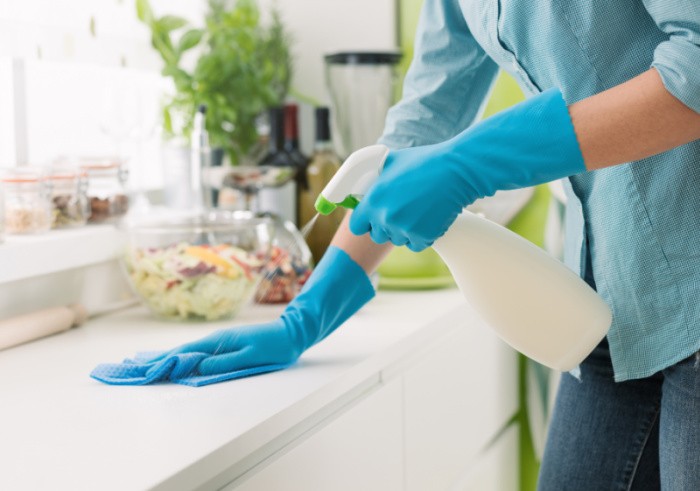

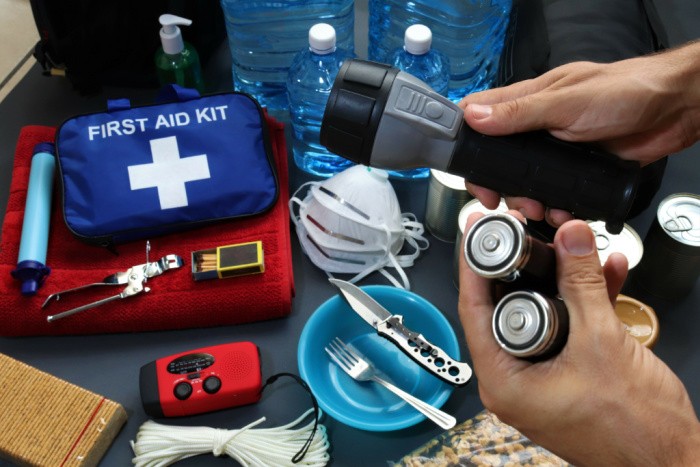
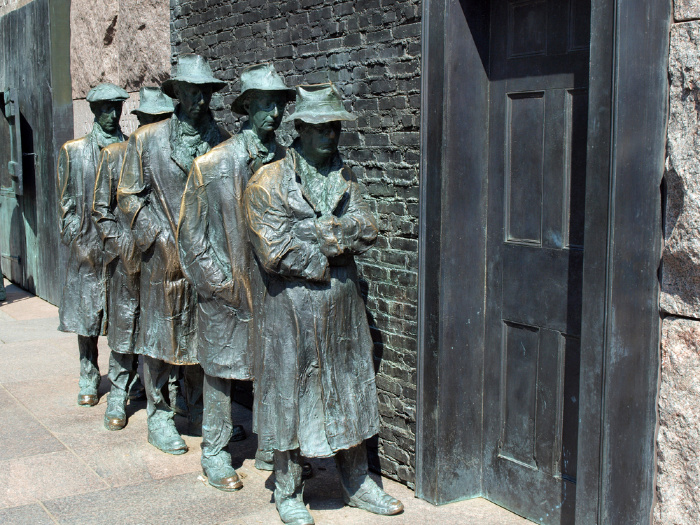

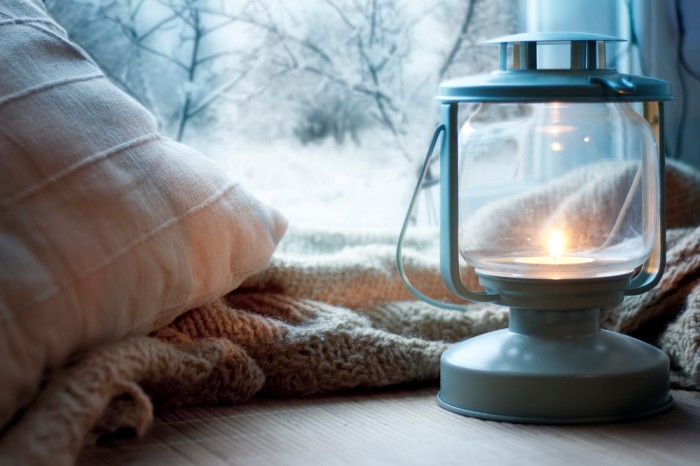
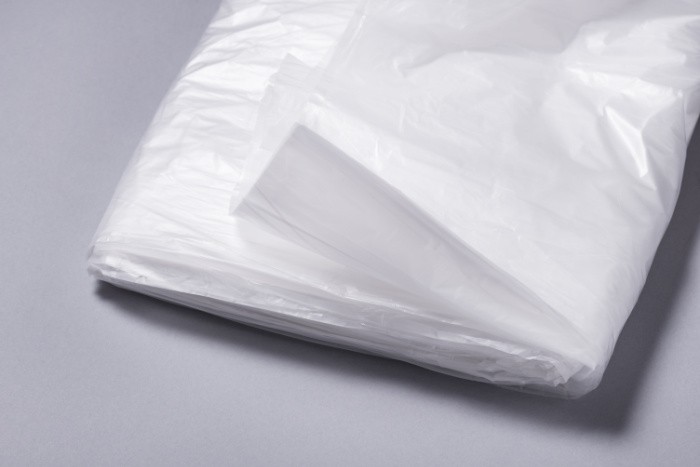
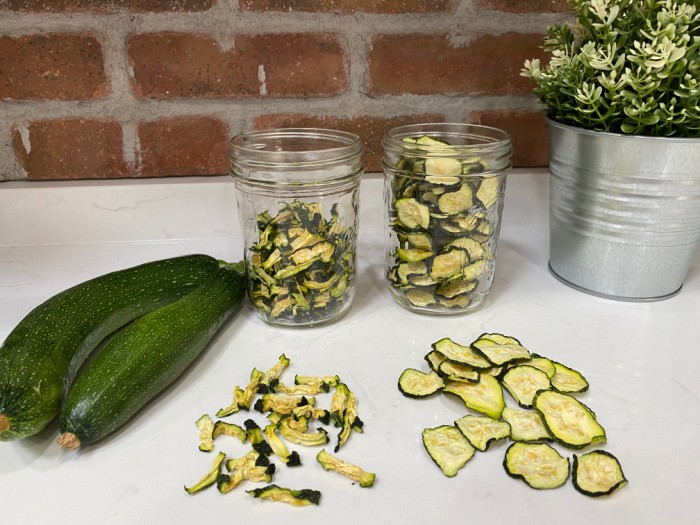













All good to know, Linda.
There is condensed soup on the list of FEMA recommended foods to store. I would suggest that instead of condensed soup, we store soups that are ready to heat and eat without the addition of water in the event that we only have the water we have stored. I would save that water for other foods like the milk, coffee, tea and hot chocolate and drinking/cleaning!
That being said, I do keep some condensed soups on the shelf but they would not be the ones I would purchase if I knew a storm was coming in that might disrupt electricity and water.
Also, because of the issue for time with the refrigerated and frozen foods, my parents always said: eat the refrigerated foods first then the frozen. Of course, that will work in my case only because I keep a minimum of both – being single, feeding only myself! If I had a huge freezer full of meat, veggies and fruit, that would definitely be a different story. Also, when I was growing up, during the winter we lost power occasionally for a day or two and mom & dad always taped up the freezer (a large one) and wrapped it with heavy quilts to maintain the cold. If we had a lot of snow on the ground (and that was generally the case causing the power outage) dad had some forms that he packed with snow and wet down to create “ice” blocks that could then be used if the power was out longer. We were fortunate that we lived right on a river so if we couldn’t pump our water we were able to go to the river and chop through the ice to get water for all our needs. It was tedious and we generally had to let the water sit for hours to allow the sediment to settle but we never were without water.
Other tips that I would suggest: If you know there is a storm coming your way, fill jars/bottles with water and pack in your freezer in plenty of time to freeze. This will help your freezer and frozen foods stay frozen or cold longer. Refrain from opening the refrigerator and freezer as much as possible – only open when you get things out to cook or make your meals.
I love hearing about people like you who don’t just roll up when it gets tough.
Your folks showed you they way and that’s the way it should be.
Hi Leanne, it’s good you were taught the tools to survive the elements. Those of us who had parents that knew we needed skills taught us by example were the best! Life is good when we are self-reliant. Linda
That brings back memories. My mother would always fill our biggest pots with water and keep them on the stove when a storm was heading our way, so we always had water. These days I have a stash of bottled water and eight of the 5 gallon water containers so if I’m caught out with no notice I still have a month of water on hand. With notice I can fill my WaterBob and our big kitchen pots to extend that time before I have to take some containers down to the river to resupply.
And I totally agree about soups. I keep condensed soups on hand only for cooking – cream of mushroom, tomato, and cheddar cheese. Otherwise I get the Progresso ready to eat canned soups since it won’t eat into my stored water supply.
Wanted to add one more option for milk…since the pandemic started I have a supply of ultra-pasteurized boxed milk – it tastes just like regular milk, because it is regular milk, just the natural bacteria in it have been killed so it can last for over a year from packaging with no refrigeration. I don’t have to worry about keeping it cold until I open a box. In my supermarkets it can be found near the powdered milk in the baking aisle.
Hi Dmwalsh, great tip on the pasteurized milk, it’s a great reminder! Thank you! You know I love hearing you are prepared with water! Linda
You know when we hear a big storm is coming we automatically start doing laundry. It’s on the “to do” list in preparation because we don’t know how long it’ll be before power is restored. Same with dishes though they don’t stack up too deep anyway.
Hi Matt, I love your comment!! I do the exact same thing. I love to know all the laundry is done before we get a storm just in case we lose power. A clean kitchen is a must as well, so we are ready for the next meal. Great comment as always! Linda
LOL…..loving you and Matt’s comments… I THOUGHT I was the only one focused on laundry and dishes before a storm… My husband rolled his eyes when I stripped the bed and grabbed the towels two weeks ago, when the weatherman threatened 5-6 feet of snow. We didn’t lose power and only got a foot of snow, but the laundry was done and the house was clean!
Hi Chris, oh my gosh, we are not alone!! See, we are always prepared before the storm!!! The rolled eyes, my husband gives me the deer head look. LOL! Linda